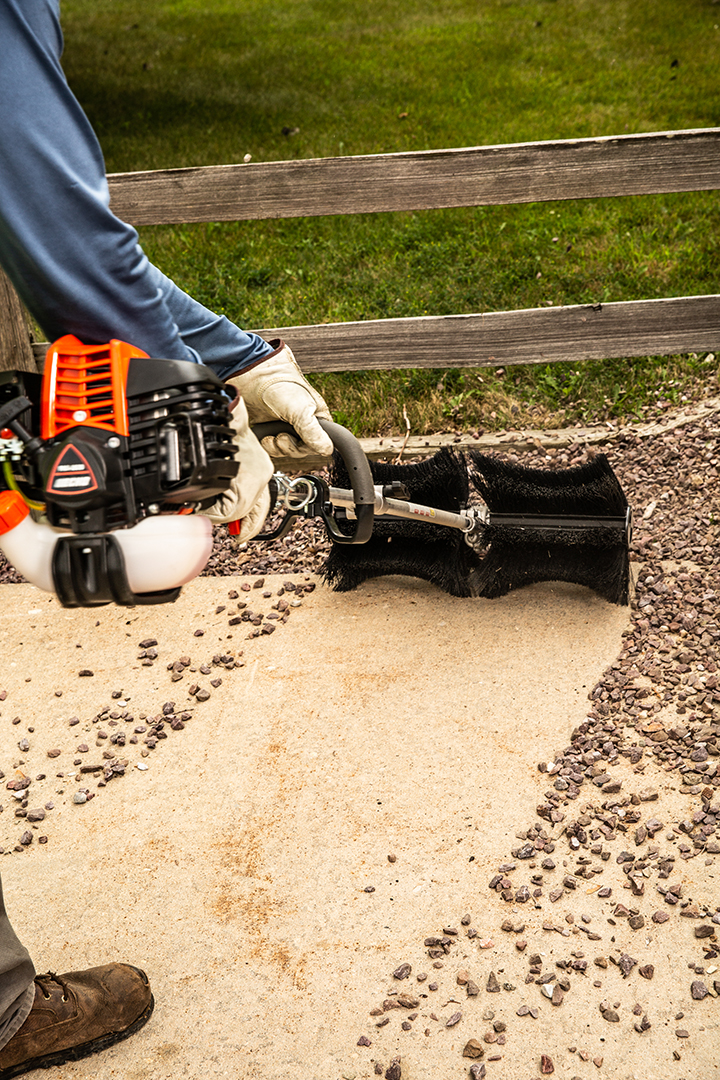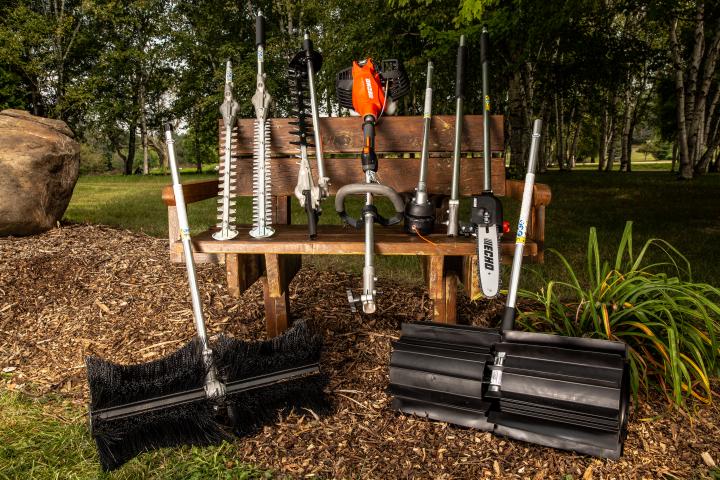Spring has arrived! It’s time to take a look at the state of your yard. We’ll boil it down to 5 steps so you’re in great shape for the season!
1. TAKE IN BIRD FEEDERS
It’s a good idea to take in your bird feeders by April 1 to prevent attracting bears—early spring is around the time when they come out of hibernation. Use a rake to clear any seed litter left over from the winter or use the leaf blower attachment for the ECHO PAS (Pro Attachment Series™) system and get the work done in half the time. Dump the leftover feed into a bag, seal it, and dispose of it or store it in a very secure container. Most wildlife have excellent noses and will find the extra bird food unless it is sealed up or taken far away.
2. RAKE UP DEBRIS
Use a rake to clean up fallen leaves, twigs, acorns, or gravel from the lawn or garden beds. Add the plant matter to the compost pile (if you have one) or bring it to a local composting company or town pile. For an easier experience cleaning up large debris such as gravel or acorns, try using the paddle attachment for the ECHO PAS system. It can sweep your lawn or driveway clear with high-powered ease.

3. PLANT AND PRUNE
After clearing flower beds of debris, plant annual flowers in open areas, but don’t forget where the perennials will spring up. Find healthy transplants at your local plant nursery or garden store to get spring started! Also, spend some time pruning dead or damaged branches from trees and shrubs. Try to avoid overpruning, which can harm the health of the plant.
4. SPREAD FRESH MULCH AND COMPOST
Depending on the requirements of each flower, shrub, or tree in your yard, spread a 1- to 2-inch layer of either mulch or compost around the base of every plant. Fill in bare areas with mulch to help to keep the soil beneath it moist.
5. RESEED THE LAWN
Last on the list is to examine the lawn for any thin or rough spots. Spread a hearty grass seed over the bare areas and water. To help the lawn stay healthy, wait until all grass has reached a height of 4 to 5 inches before resuming normal mowing practices.
Source / The Old Farmer’s Almanac

